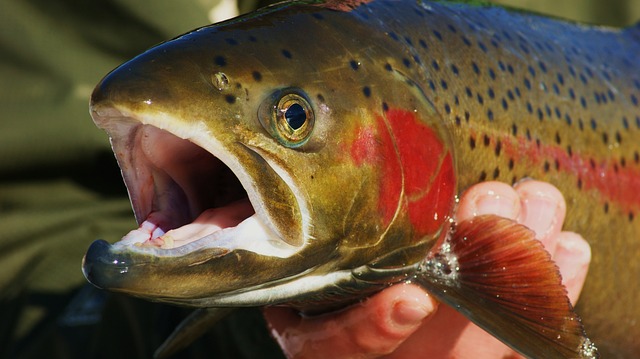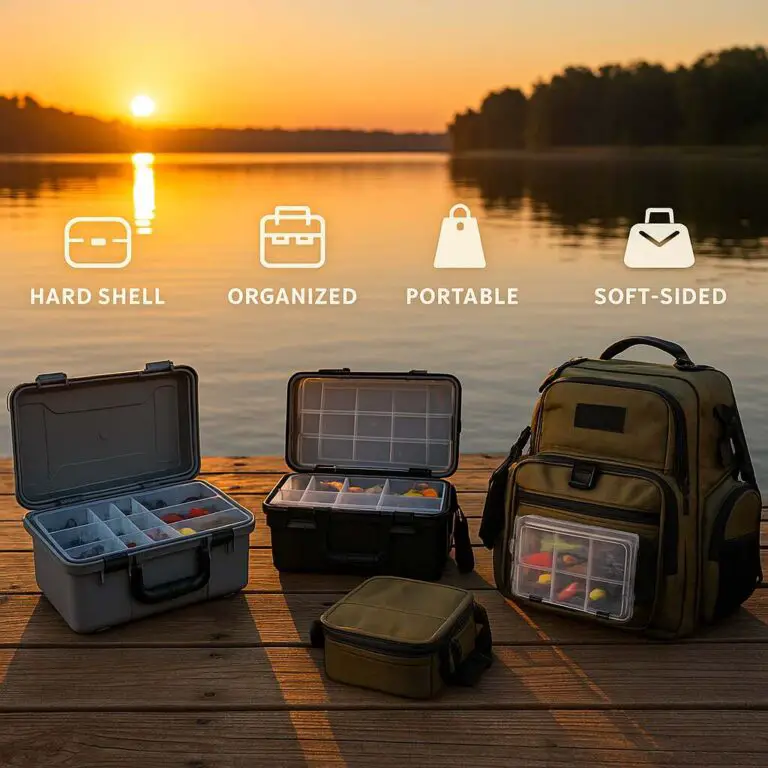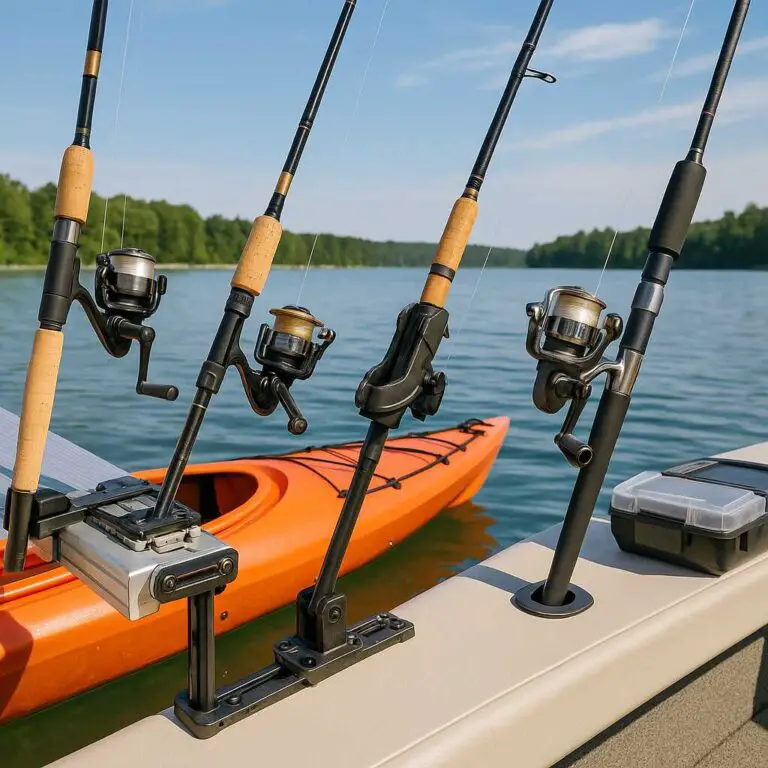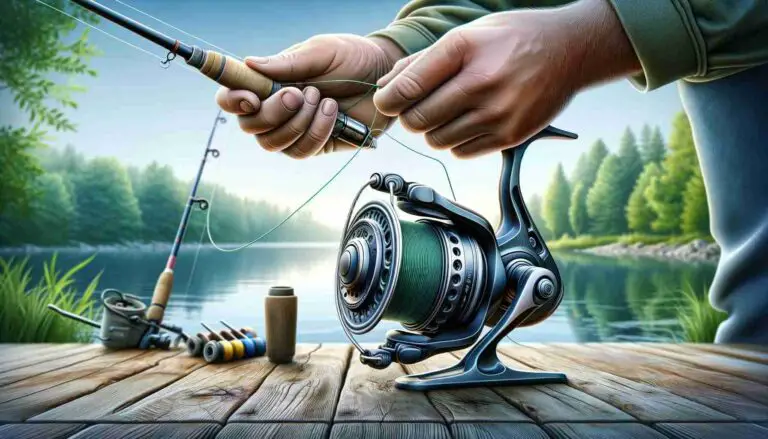Today, I want to share my passion for hooking those magnificent steelhead and help you navigate one crucial aspect of this pursuit: selecting the right hook size. There’s something truly captivating about the challenge of steelhead fishing. These powerful fish, known for their incredible fighting spirit, can make any angler’s heart race with anticipation. But landing a steelhead requires more than just skill and luck; it also calls for the right equipment, including the right hook size.
The best size hook for steelhead can vary depending on factors such as fish size, water conditions, and bait/lure selection. As a general guideline, #6 to #10 hooks work well for smaller steelhead, while #2 to #4 hooks are suitable for larger ones.
It’s essential to observe fish behavior and adapt your hook size accordingly for optimal success. In this comprehensive guide, I’ll explore the ins and outs of hook size selection for steelhead fishing. From understanding the feeding habits of these elusive creatures to considering various factors that influence hook size choice, I’ll leave no stone unturned.
Let’s get started!
Understanding Steelhead and Their Feeding Habits
Before I dive into the nitty-gritty of hook sizes, it’s important to have a solid understanding of steelhead and their feeding habits. Steelhead, often referred to as the “silver ghosts,” are anadromous fish closely related to rainbow trout. These incredible creatures spend their early years in freshwater rivers before migrating to the ocean, where they grow and mature. When the time is right, they return to their natal rivers to spawn.
When it comes to feeding, steelhead are opportunistic predators. They have a diverse diet that includes insects, small fish, crustaceans, and even the occasional terrestrial critter. However, their preferred food source can vary depending on their location and the specific time of year.
Understanding the feeding habits of steelhead is essential for selecting the right hook size. You see, steelhead have a mouth structure designed to capture and consume their prey efficiently. Therefore, using a hook that matches the size of their mouth is crucial for ensuring a solid hookset.
Keep in mind that steelhead can vary significantly in size depending on their age and the region you’re fishing in. Younger steelhead, known as “smolts,” are typically smaller, ranging from a few inches to a foot in length. On the other hand, adult steelhead can reach impressive sizes of over three feet and weigh more than 20 pounds.
Now that you have a basic understanding of steelhead and their feeding habits, let’s move on to explore the factors that influence the selection of the appropriate hook size for these magnificent fish.
Factors to Consider When Choosing Hook Sizes for Steelhead
When it comes to choosing the right hook size for steelhead fishing, several factors come into play. Let’s take a closer look at each of these factors to ensure you make an informed decision:
1. Fish Size:
The size of the steelhead you’re targeting should be one of the primary considerations when selecting a hook size. Smaller steelhead typically have smaller mouths, so using a hook that matches their size increases the chances of a successful hookset. Conversely, larger steelhead require larger hooks to accommodate their larger mouths and ensure solid hook penetration.
As a general guideline, if you’re targeting smaller steelhead, consider using hooks in the range of #6 to #10. For larger steelhead, hooks in the range of #2 to #4 may be more appropriate. Remember, these are just rough estimates, and local conditions and fish populations can influence the ideal hook size.
2. Water Conditions and Visibility:
The clarity and visibility of the water you’re fishing in also play a role in hook size selection. In clear water, steelhead tends to be more cautious and can scrutinize your presentation. In such conditions, downsizing your hook size can make a difference, as it appears more natural and reduces the chances of spooking the fish.
Conversely, in stained or murky water, steelhead rely more on their sense of smell and vibration to detect prey. In these situations, using slightly larger hooks can help increase visibility and attract the attention of the fish.
3. Bait and Lure Selection:
The type of bait or lure you’re using for steelhead fishing can also influence the appropriate hook size. Different baits and lures require different hook sizes to ensure proper presentation and effective hooksets.
For example, if you’re using small bait such as worms or single eggs, using smaller hooks like #8 or #10 can be ideal. On the other hand, if you’re using larger bait such as spawn sacs or artificial lures, a slightly larger hook size, such as #4 or #6, might be more appropriate.
Considering these factors will help guide you in selecting the right hook size for steelhead fishing. However, keep in mind that fishing conditions can vary from one location to another, so it’s essential to experiment and adapt your hook size based on your observations and experiences on the water.
Popular Hook Sizes for Steelhead Fishing
Now that you understand the factors to consider when choosing hook sizes for steelhead fishing, let’s explore some popular hook sizes that are commonly used by anglers. Remember, these sizes are general recommendations, and you may need to adjust them based on your specific fishing conditions and preferences.
- #6 Hook: The #6 hook size is versatile and suitable for targeting smaller steelhead or when fishing in clear water conditions. It works well with smaller baits like single eggs, worms, or smaller artificial lures. The smaller size allows for a natural presentation and can entice cautious steelhead to bite.
- #4 Hook: The #4 hook size is a popular choice for targeting a range of steelhead sizes. It offers a good balance between hook strength and size, making it suitable for various bait and lure options. This size is often effective in both clear and slightly stained water conditions.
- #2 Hook: If you’re targeting larger steelhead or fishing in situations where visibility is reduced, such as stained or murky water, the #2 hook size is worth considering. It provides a larger profile and better visibility, making it easier for steelhead to spot your presentation.
- #1/0 or 2/0 Hook: For anglers targeting trophy-sized steelhead or using larger baits and lures, stepping up to #1/0 or 2/0 hook sizes can be beneficial. These larger hooks accommodate bigger baits and provide the necessary strength for handling larger fish.
It’s important to note that these hook sizes are not set in stone, and you should adapt them based on your specific fishing conditions, local regulations, and personal preferences. Additionally, different hook manufacturers may have slight variations in their sizing systems, so it’s always a good idea to compare hooks from different brands to find the best fit for your needs.
Ultimately, the best way to determine the most effective hook size for steelhead fishing is through experimentation and experience. Keep track of what works well for you in different situations, and don’t be afraid to adjust and adapt your hook size based on your observations on the water.
Additional Considerations
When it comes to selecting the right hook size for steelhead fishing, there are a few additional considerations to keep in mind. Let’s explore these factors to further enhance your hook size decision-making process:
1. Hook Types:
In addition to hook size, the type of hook you choose can also affect your success in hooking and landing steelhead. There are various hook styles available, including traditional J-hooks, circle hooks, and octopus hooks, each with its own advantages and applications.
For steelhead fishing, popular hook styles include octopus hooks and egg hooks. Octopus hooks are known for their excellent hooking efficiency and are often used with bait presentations. Egg hooks, as the name suggests, are designed specifically for fishing with eggs or spawn sacs.
Consider the type of presentation you’ll be using and the specific hooking characteristics of each style when selecting the appropriate hook type along with the hook size.
2. Local Regulations and Restrictions:
Before hitting the water, it’s essential to familiarize yourself with local fishing regulations and any specific restrictions related to hook size and barbless hooks. Different regions may have specific rules in place to protect the fishery and ensure sustainable fishing practices.
Ensure that you comply with these regulations, as they not only contribute to the preservation of fish populations but also help maintain a level playing field for all anglers.
With these additional considerations in mind, you’ll be well-equipped to make informed decisions about hook sizes, types, and adherence to local regulations, ultimately enhancing your overall fishing experience while maintaining the health of the fishery.
Now that I’ve covered these important considerations, let’s move on to some practical tips that will help you in your quest to select the perfect hook size for steelhead fishing.
Tips for Successful Hook Size For Steelhead Fishing Selection
Now that I’ve covered the various factors and considerations involved in selecting the right hook size for steelhead fishing, let’s dive into some practical tips to ensure your hook size selection is successful:
- Observe and Adapt: Pay close attention to the behavior of steelhead in your fishing area. Observe the size of their prey, their feeding patterns, and any specific preferences they may have. By understanding their behavior, you can better match your hook size to what they are naturally targeting.
- Start with General Recommendations: Begin with the general hook size recommendations we discussed earlier, such as #6 for smaller steelhead and #4 for average-sized fish. These sizes serve as a good starting point, and you can fine-tune from there based on your specific fishing conditions.
- Keep a Variety of Hook Sizes: Carry a range of hook sizes in your tackle box to allow for adjustments based on changing conditions or fish behavior. Having options available will enable you to experiment and adapt to what is most effective on a given day.
- Experiment with Different Sizes: Don’t be afraid to try different hook sizes throughout your fishing trips. Sometimes, steelhead may respond better to smaller or larger hooks depending on various factors such as water temperature, clarity, and prey availability. Through trial and error, you’ll discover what works best in different situations.
- Consider Fish Response: Pay attention to how steelhead are reacting to your presentation. If you notice frequent nibbles or short strikes without solid hooksets, it could be an indication that your hook size is either too big or too small. Adjust accordingly to improve your chances of a successful hookup.
- Seek Local Knowledge: Connect with experienced anglers or local fishing guides who have knowledge of the specific waters you’re fishing. They can provide valuable insights into hook size preferences based on their experience and the behavior of steelhead in your area.
- Document Your Successes: Keep a fishing journal or record of your catches. Note the hook size used, the fishing conditions, and the success rates. Over time, you’ll be able to identify patterns and trends that will guide your future hook size selections.
Remember, selecting the right hook size for steelhead fishing requires a balance between observation, adaptation, and personal experience. Don’t be discouraged if it takes some time to find the perfect fit. The journey of discovery is part of what makes fishing so thrilling and rewarding.
FAQs
Here are some frequently asked questions (FAQs) along with their answers that may not have been covered in the article:
Q: Is a 20lb braid good for steelhead?
A: While a 20lb braid can be suitable for steelhead fishing in certain situations, the choice of fishing line ultimately depends on various factors. Braid offers high strength and sensitivity, which can be advantageous when targeting larger steelhead or fishing in areas with heavy cover. However, it’s essential to consider the water conditions, fish behavior, and the size of steelhead in your fishing location. In clear and low-visibility situations, using a lighter line, such as 10-15lb, may be more appropriate for a more natural presentation.
Q: What size hook should I use for steelhead eggs?
A: Selecting the right hook size for steelhead eggs depends on various factors, including the size of the eggs, water conditions, and the size of the steelhead you’re targeting. As a general guideline, using smaller hooks like #8 or #10 can be effective for fishing with smaller-sized steelhead eggs. These hooks provide a good match for the size of the eggs and help create a natural presentation. However, if you’re using larger eggs or fishing for larger steelhead, you may want to consider using slightly larger hooks like #4 or #6 to accommodate the size of the bait and the fish’s mouth.
Q: Can I use a larger hook size for steelhead fishing to increase my chances of hooking a fish?
A: While using a larger hook may seem like a good idea, it’s important to consider the size of the steelhead’s mouth. Using a hook that is too large can make it difficult for the fish to take the bait properly, resulting in missed opportunities. It’s generally recommended to match the hook size to the fish’s mouth size for optimal hooksets.
Q: Are barbed or barbless hooks more effective for steelhead fishing?
A: Both barbed and barbless hooks can be effective for steelhead fishing. However, using barbless hooks is often encouraged as they are easier to remove, reducing potential harm to the fish during catch-and-release. Always check local fishing regulations to ensure compliance with any specific requirements regarding hook barbs.
Q: How should I set the hook when fishing for steelhead?
A: When you feel a bite or see a steelhead take your bait, it’s crucial to resist the urge to immediately jerk the rod. Instead, maintain a steady pressure and wait for the fish to fully take the bait before setting the hook with a smooth and firm upward motion. Setting the hook too aggressively or prematurely may result in a missed hookset.
Q: What other equipment should I consider for steelhead fishing besides hook size?
A: In addition to hook size, other essential equipment for steelhead fishing includes a suitable fishing rod and reel combo, appropriate fishing line (typically 8-12 lb test for steelhead), quality terminal tackle such as swivels and leaders, and a selection of bait or lures that mimic the natural prey of steelhead. Having a well-rounded setup ensures you’re prepared for a successful fishing experience.
Q: What size hooks should I use for summer steelhead?
A: When it comes to summer steelhead fishing, hook size selection can vary depending on factors such as the average size of the fish, water conditions, and bait/lure choices. As a general starting point, using hook sizes in the range of #4 to #6 can be effective for targeting summer steelhead. These sizes provide a good balance between hook strength and accommodating the fish’s mouth size. However, it’s crucial to consider the specific conditions you’re fishing in. If you’re targeting smaller summer steelhead or fishing in clear water, downsizing to #6 to #8 hooks can improve your chances of success. On the other hand, if you’re targeting larger summer steelhead or fishing in stained or murky water, using slightly larger hooks like #2 or #4 can enhance visibility and increase your chances of attracting strikes.
Q: How can I improve my chances of hooking and landing steelhead?
A: Apart from selecting the right hook size, there are a few additional tips to increase your chances of hooking and landing steelhead. These include varying your presentation, trying different bait or lure colors, using scent attractants, studying local fishing reports, and seeking advice from experienced anglers. Additionally, practicing proper casting techniques and maintaining a stealthy approach can also enhance your success on the water.
Q: What is the best hook for steelhead?
A: The choice of the best hook for steelhead can vary depending on personal preferences, fishing conditions, and the specific techniques used. However, there are a few popular hook styles that are widely regarded as effective for steelhead fishing. Octopus hooks and egg hooks are commonly favored by anglers targeting steelhead. Octopus hooks offer excellent hooking efficiency and are often used with bait presentations, while egg hooks are specifically designed for fishing with eggs or spawn sacs. Both hook styles provide good penetration and hold, increasing the chances of a successful hookset.
Conclusion
In conclusion, when it comes to choosing the best size hook for steelhead, several factors come into play. Steelhead can vary in size, so it’s important to consider the average size of the fish in your region.
For smaller steelhead, such as smolts, a hook size in the range of #6 to #10 is typically suitable. These smaller hooks provide a better fit for their mouths and increase the chances of a solid hookset.
On the other hand, larger adult steelhead requires larger hooks to accommodate their bigger mouths. Hook sizes in the range of #2 to #4 are often recommended for targeting these trophy-sized fish.
Apart from fish size, water conditions, and visibility also influence hook size selection. In clear water, steelhead can be more cautious, so downsizing your hook to a slightly smaller size can make your presentation appear more natural and increase your chances of success.
In stained or murky water, where visibility is reduced, using slightly larger hooks can help increase visibility and attract the attention of steelhead.
Furthermore, the type of bait or lure you’re using plays a role in hook size selection. Smaller baits like single eggs or worms work well with smaller hooks like #8 or #10, while larger baits such as spawn sacs or artificial lures may require slightly larger hooks like #4 or #6 for proper presentation.
It’s important to note that these recommendations are general guidelines, and you should always adapt your hook size based on specific fishing conditions and your observations on the water. Experimentation and experience are key to finding the optimal hook size for steelhead fishing.
Remember, a proper hook size that matches the fish’s mouth size increases your chances of a successful hookset, leading to more thrilling moments and unforgettable catches.
Wishing you tight lines, great memories, and the joy of successful hooksets as you embark on your steelhead fishing endeavors. May the waters be kind, and the steelhead plentiful. Happy fishing!
Next Read:




